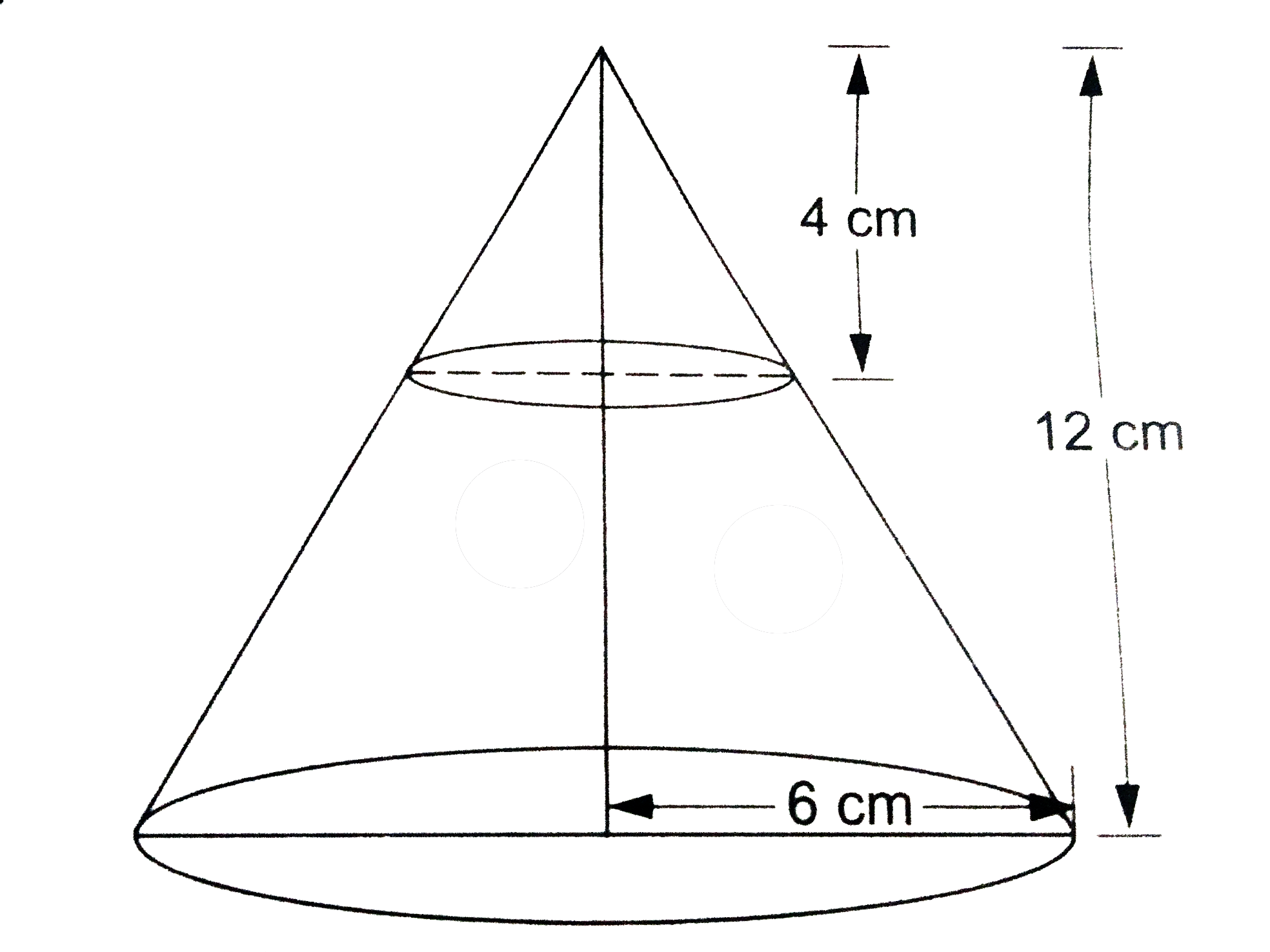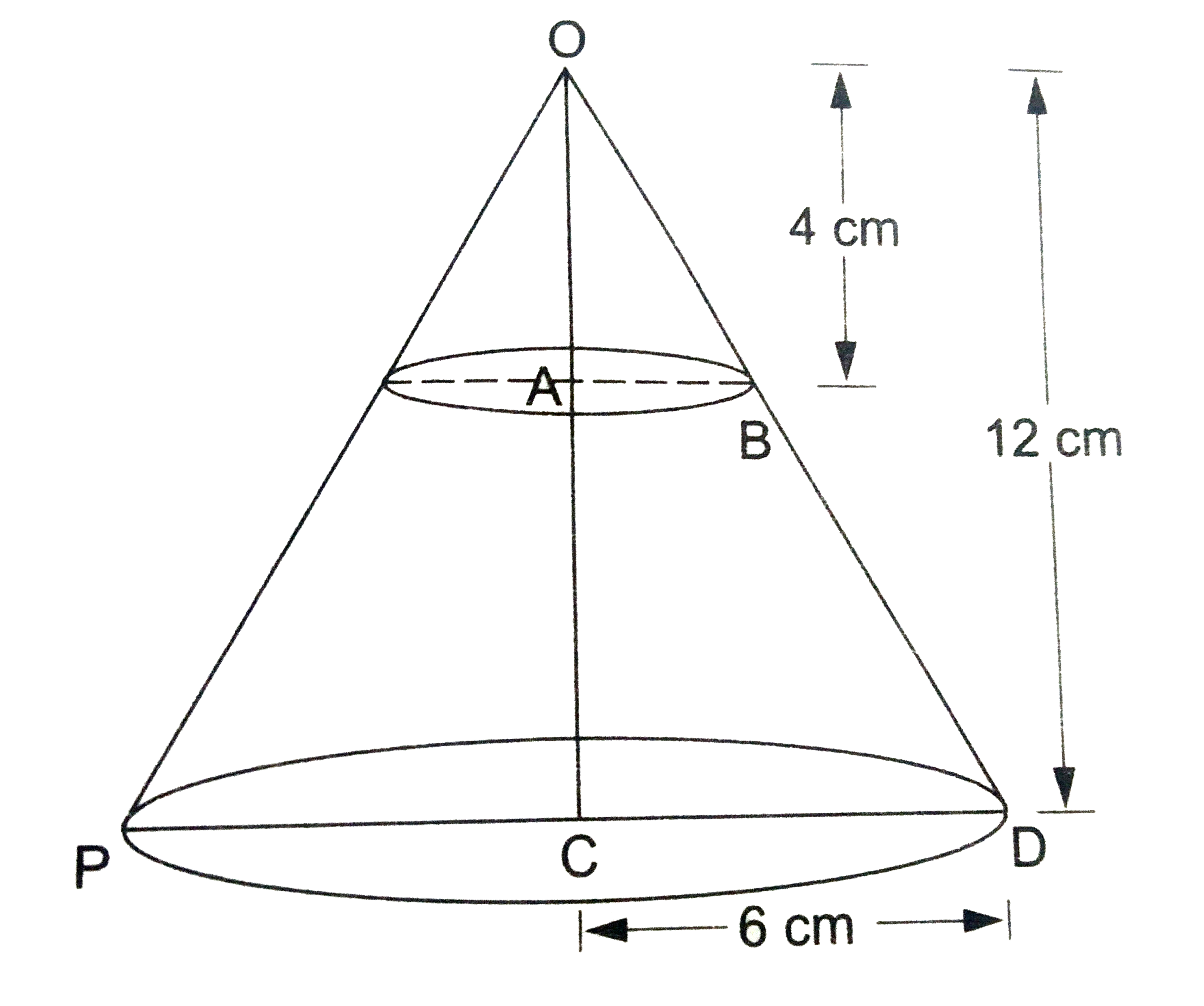In the figure, from top of a solid cone of height 12 cm and base radius 6 cm, a cone of height 4 cm is removed by a plane parallel to the base. Find the total surface area of the remaining solid.
[ Use π=227 and √5=2.236.]

Clearly, the remaining solid is the frustum CDBA of cone OPD. Radius of lower end of the frustum, R = CD = 6 cm.
Height of the frustum,
h = AC = OC - OA
=(12−4)cm=8cm.
Let the radius of upper face be r cm.

Now, ΔOAB~ΔOCD.
So, OAOC=ABCD⇒412=r6
⇒r=(412×6)cm=2cm.
Slant height of the frustum,
l=√h2+(R−r)2=√82+(6−2)2=√80xm=4√5cm.
Total surface area of the frustum
= area of base + area of top + curved surface area
=πR2πr2+πl(R+r)=π[R2+r2+l(R+r)]
227×[62+πr2+πl(R+r)=π[R2+r2+l(R+r)]
=[227×(36+4+71.552)]cm2=(227×11.552)cm2
=(22×15.936)cm2=350.592cm2.
Similar Questions
In Fig. 16.74, from the top of a solid cone of height 12 cm and base radius 6 cm, a cone of height 4 cm is removed by a plane parallel to the base. Find the total surface area of the remaining solid. (Use π=22/7 and √5=2.236) (FIGURE)
View SolutionFrom a solid cylinder of height 4cm and radius 3cm a conical cavity of height 4cm of base radius 3cm is hollowed out. What is the total surface area of the remaining solid?
View Solution
Knowledge Check
- Question 1 - Select One
From a solid cylinder of height 10 cm and radius of the base 6 cm, a cone of same height and same base is removed. The volume of the remaining solid is :
A240π cu. cmB5280 cu. cmC620π cu. cmD360π cu. cm
A cone of same height and same base radius is cut from a cylinder of height 8 cm and base radius 6 cm .Find the total surface area and volume of the remaining solid.
View SolutionFrom a solid cylinder of height 36 cm and radius 14 cm a conical cavity of radus 7 cm and height 24 cm is drilled out . Find the volume and the total surface area of the remaining solid.
View SolutionFind the curved surface area of a cone whose height is 12cm and base radius is 5cm ?
View SolutionA cone of equal height and equal base is cut off from a cylinder of height 24 cm and base radius 7 cm .Find the total surface and volume of remaining solid.
View SolutionA conical hole is drilled in a circular cylinder of height 12 cm and base radius 5 cm. The height and the base radius of the cone are also the same. Find the whole surface and volume of the remaining cylinder.
View SolutionFrom a solid cylinder whose height is 8 cm and radius 6cm , a conical cavity of height 8 cm and of base radius 6 cm is hollowed out . Find the volume of the remaining solid.Also find the total surface area of the reamining solid.[ Take π=3.14 ]
View SolutionFrom a right circular cylinder with height 10cm and radius of base 6cm, a right circular cone of the same height and base is removed. Find the volume of the remaining solid.
View Solution

